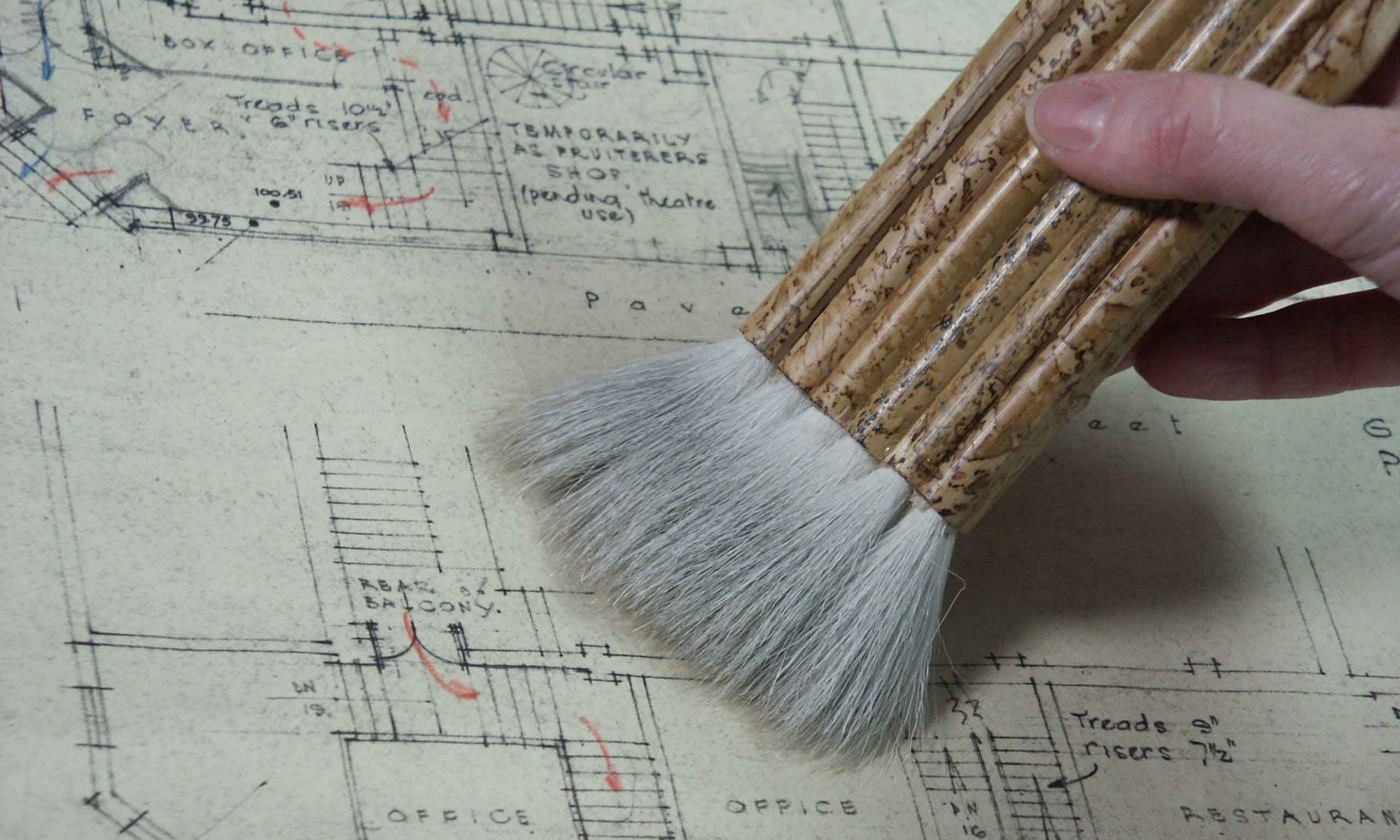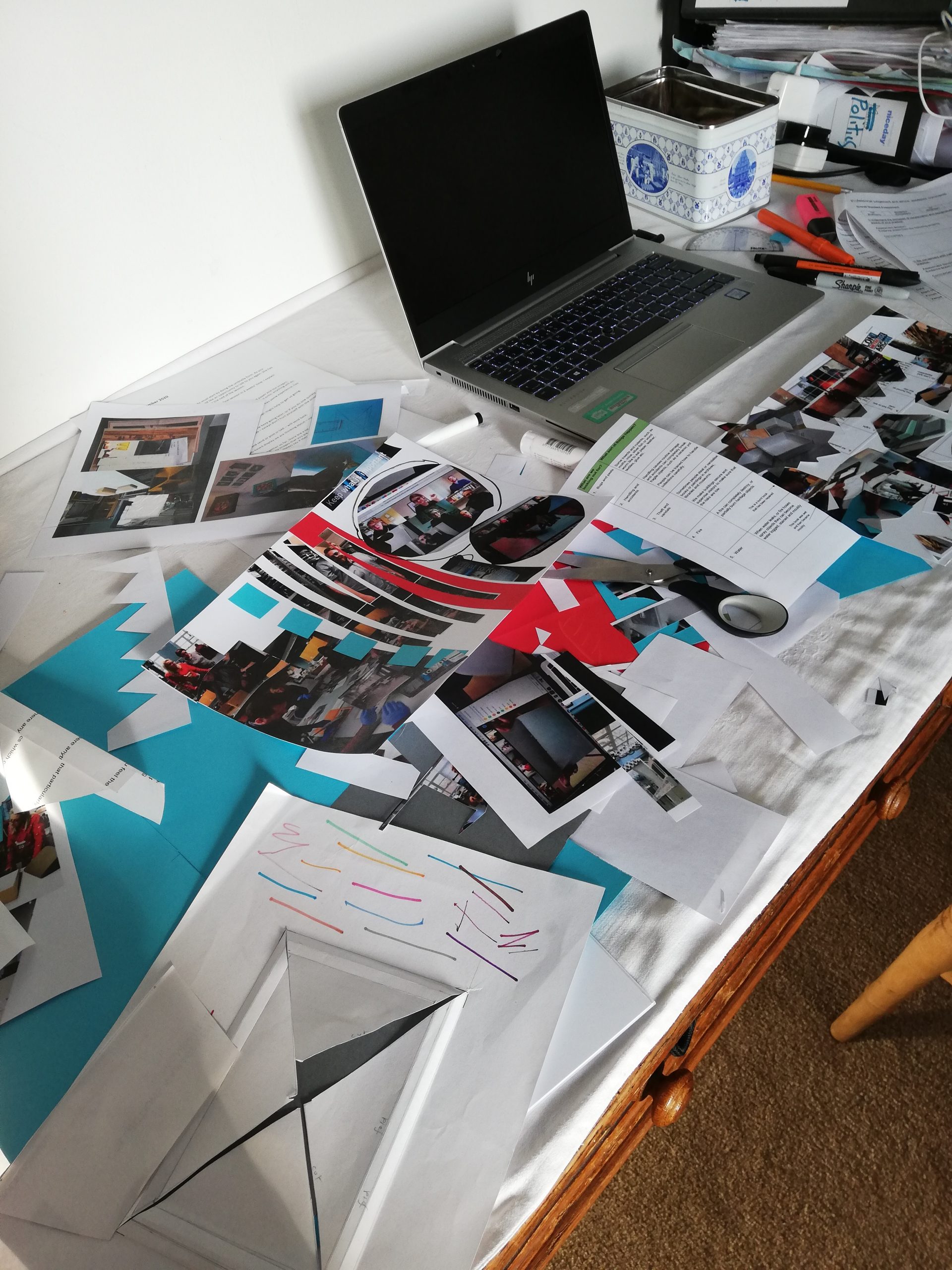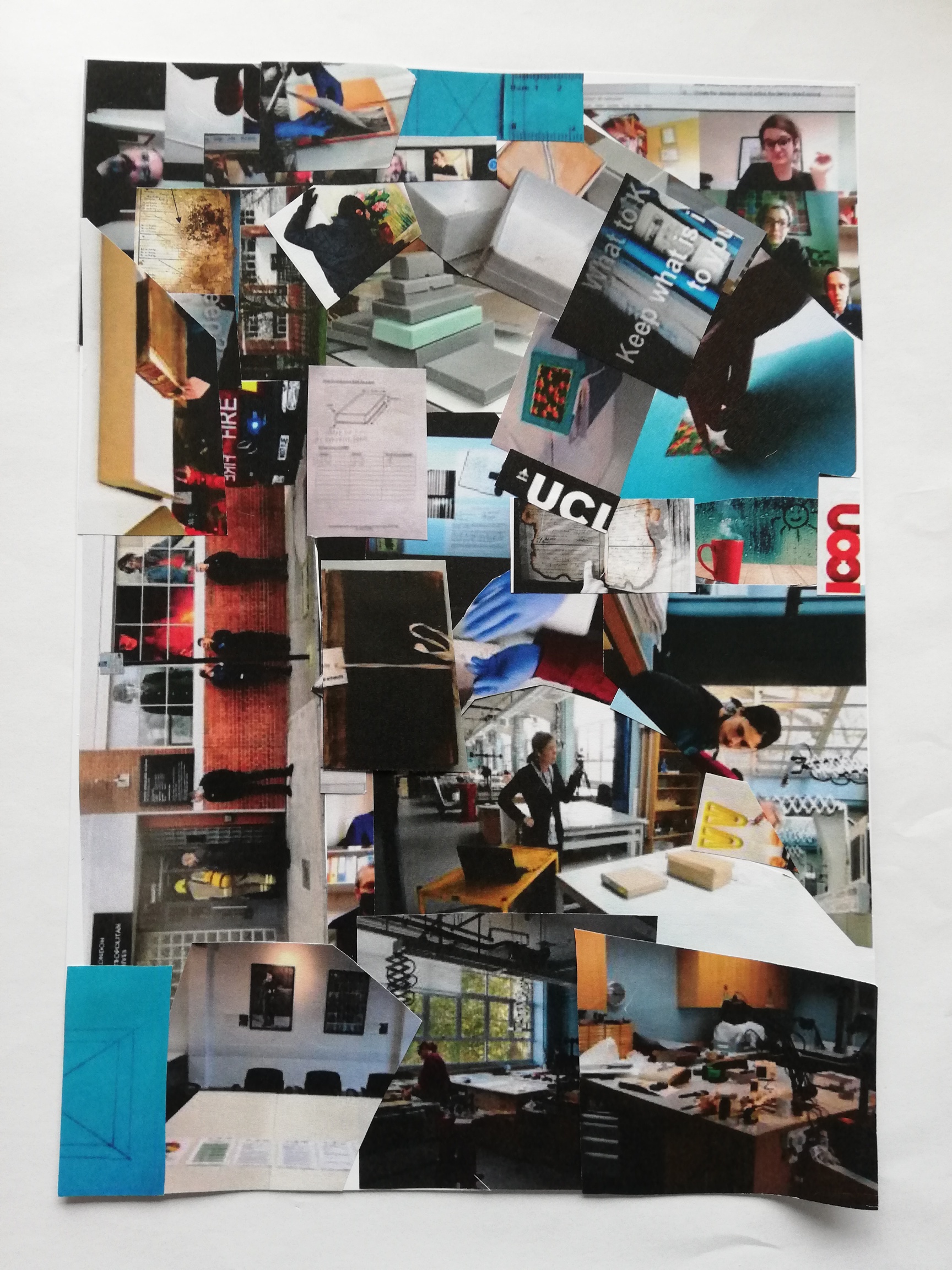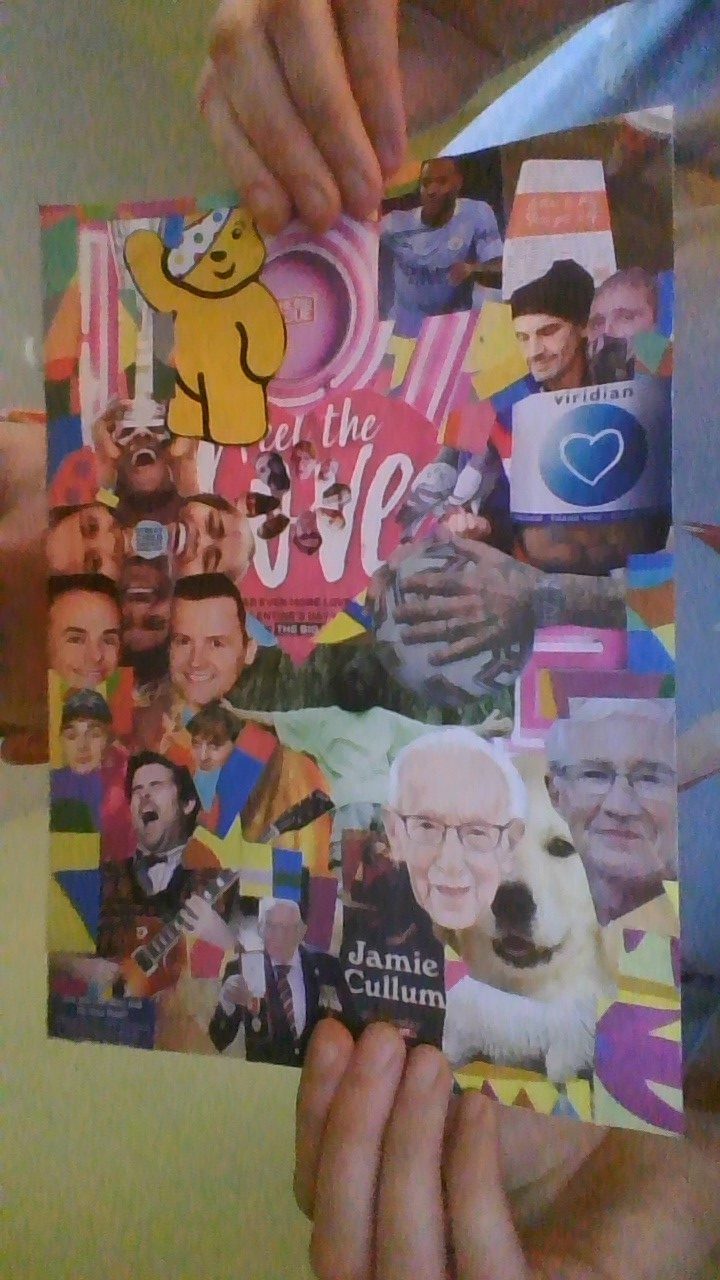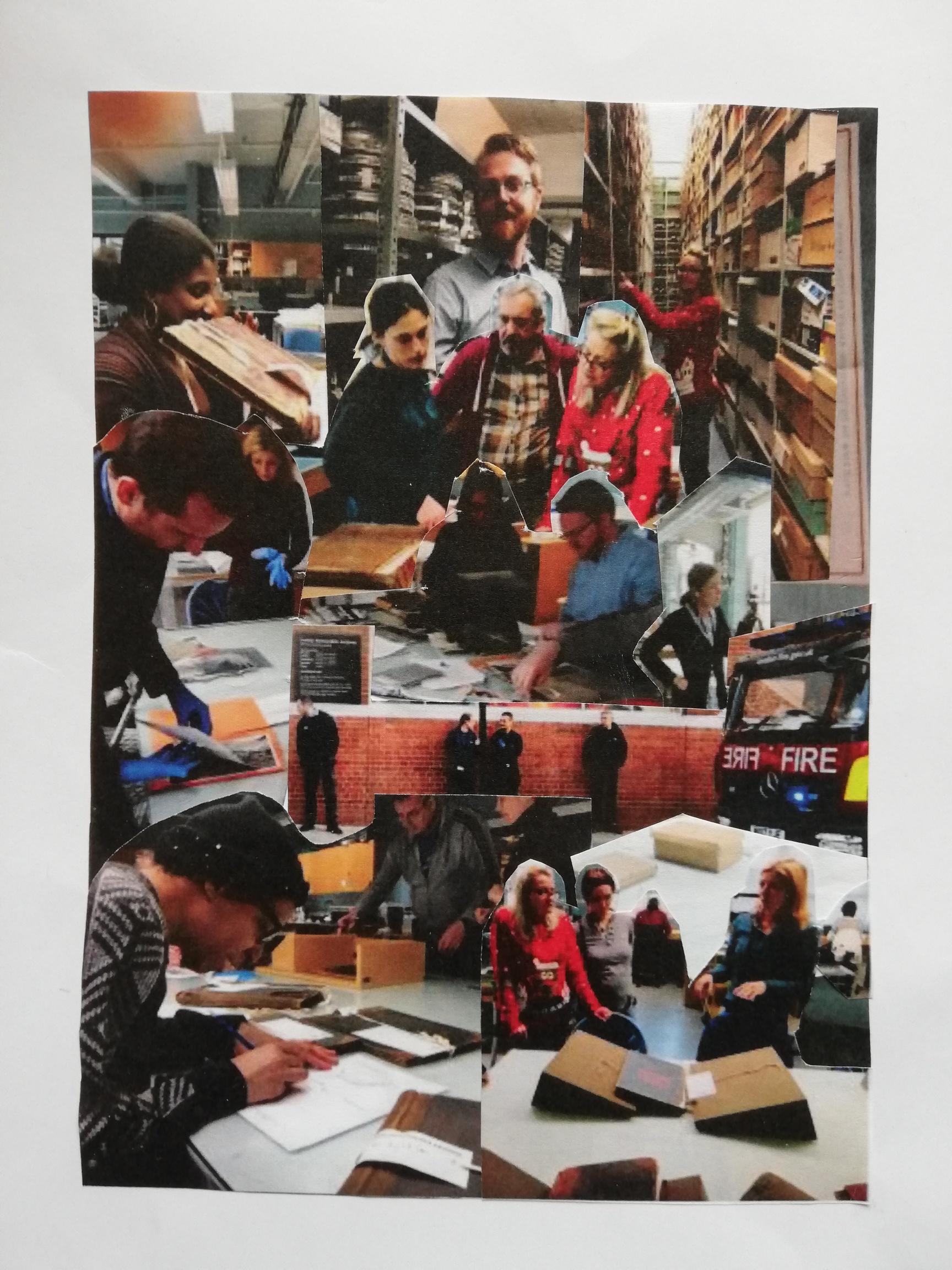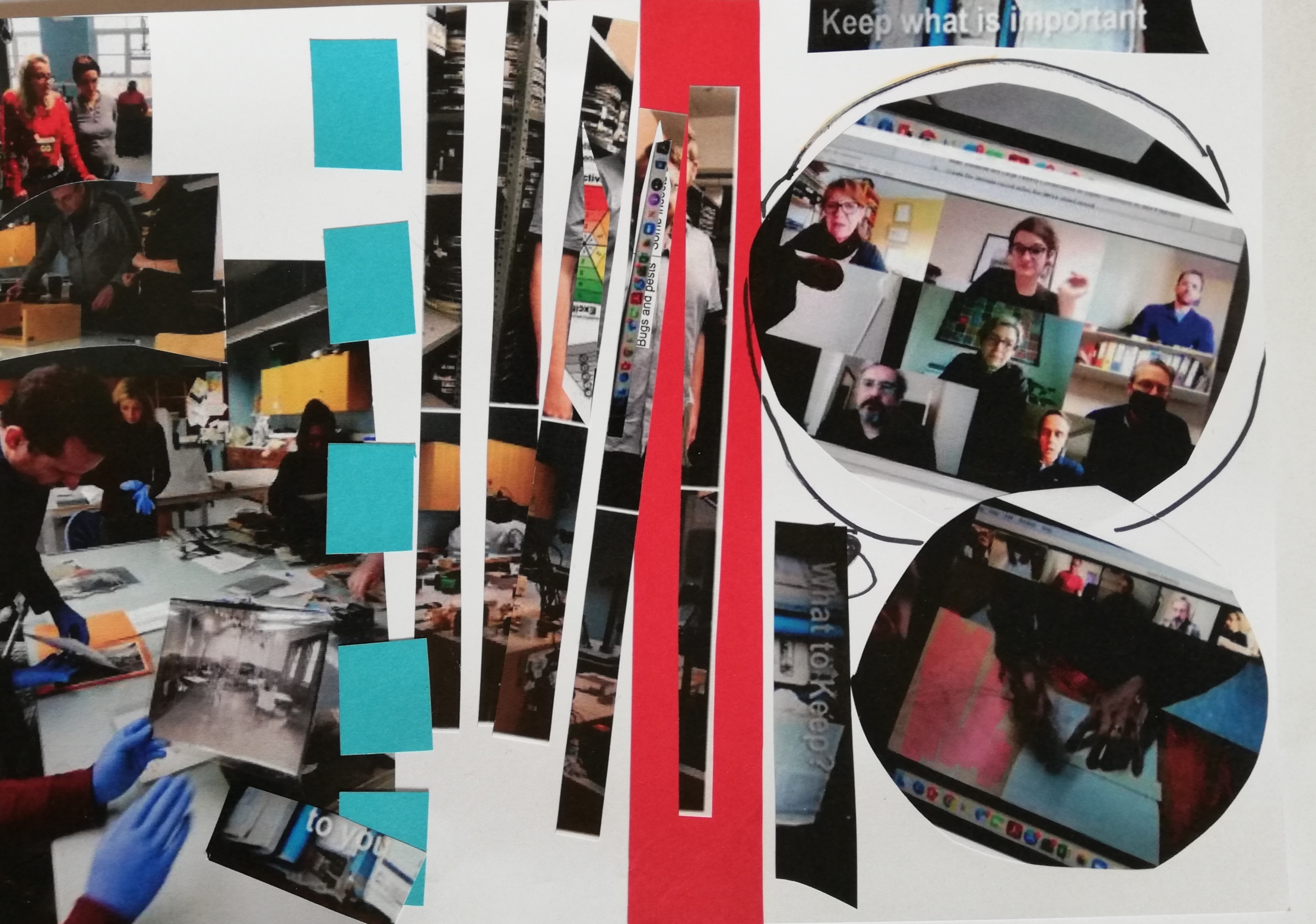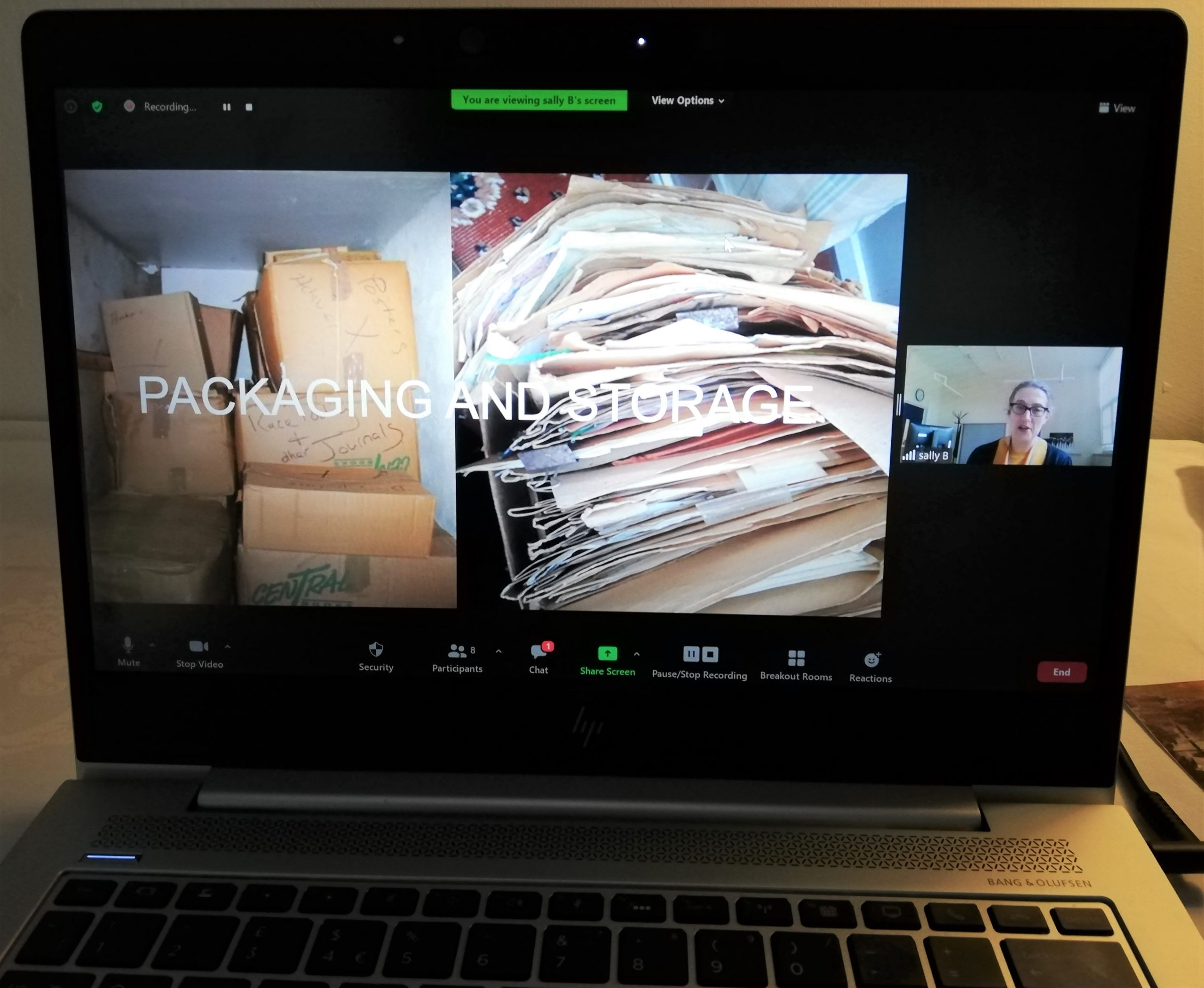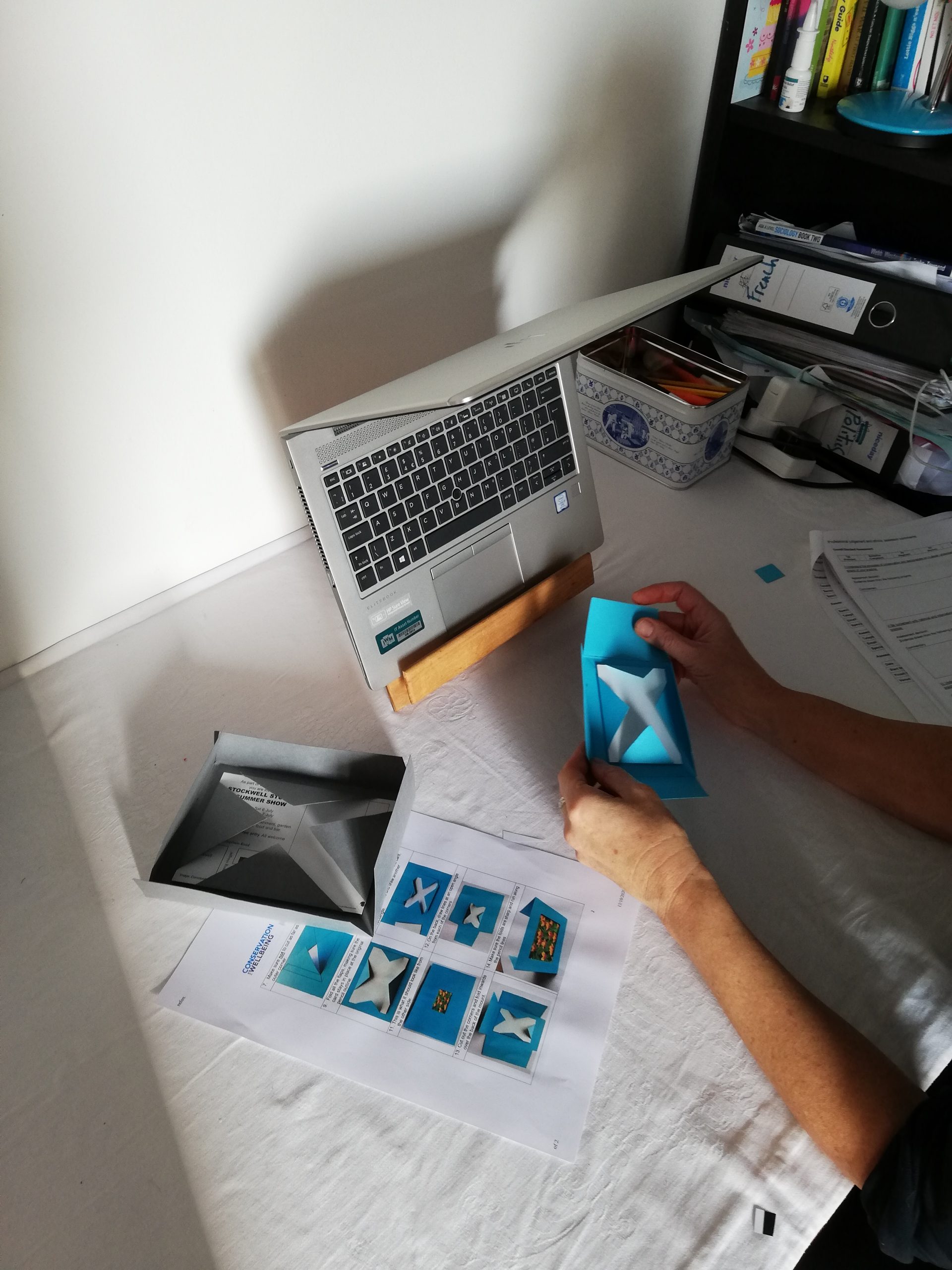Session 10 on Zoom 20th November – Project display
2.30 to 3.30 – Zoom workshop, hosted by Restoration Trust (RT) and presented from Project Worker’s (HL) home
The final workshop was a celebration of what the participants had achieved by staying with the project through the transition from face-to-face sessions to virtual workshops on Zoom. By generously committing their time and enthusiasm and the strength to tackle something new they have supported our Conservation for Wellbeing project and enabled us to complete the sessions. A slide show which described the project from beginning to end was produced and shared that with the invited guests who joined us for our final Zoom session. Each participant was presented with a certificate and these were later printed and sent out to each person.
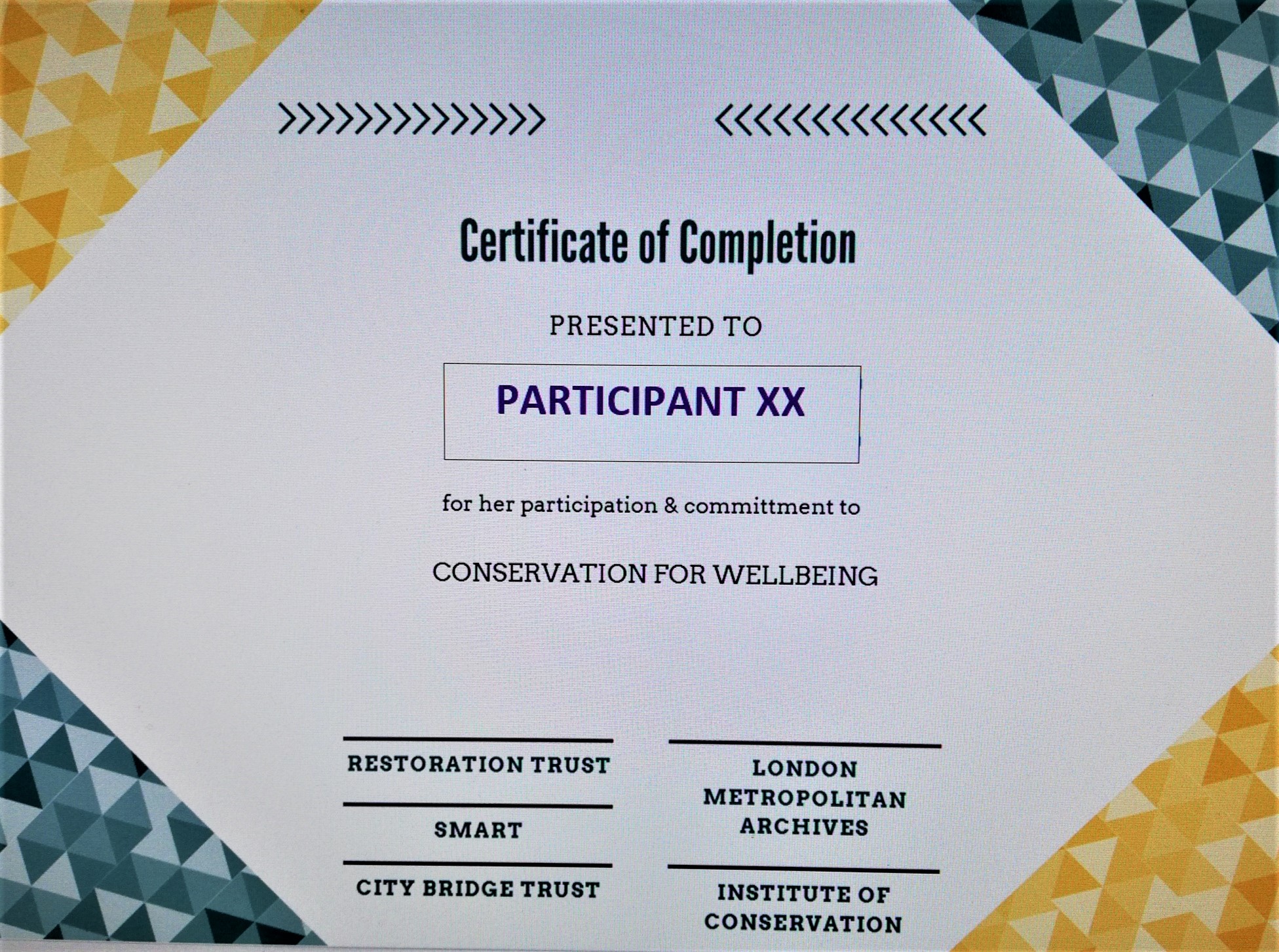 The research conducted by art therapist Daisy Rubinstein, with expert support from UCL’s Linda Thomson, will professionally evaluate the impact of the project for participants and staff, and I trust it has had a beneficial effect on all those who have taken part. Using conservation and preservation activities for a wellbeing project working with people with complex mental health needs has not been tried before and we hope that this one will be the first of many. Here are some ‘lessons learnt’ points that I will be using for our next one!
The research conducted by art therapist Daisy Rubinstein, with expert support from UCL’s Linda Thomson, will professionally evaluate the impact of the project for participants and staff, and I trust it has had a beneficial effect on all those who have taken part. Using conservation and preservation activities for a wellbeing project working with people with complex mental health needs has not been tried before and we hope that this one will be the first of many. Here are some ‘lessons learnt’ points that I will be using for our next one!
- Involve participants at every level of the project so that they are helping to formulate and feedback as well as experiencing the activities
- Make sure there is enough time allocated for communication in-between sessions
- Ensure that evaluation documentation (questionnaires, surveys, etc.) are user friendly
- Build in an acknowledgement that the experiences around the actual workshops – travel, refreshments, introductions, technology, language, home circumstances – are as much a part of the engagement and learning as the workshop itself.
Conservation for Wellbeing 1 – 30
